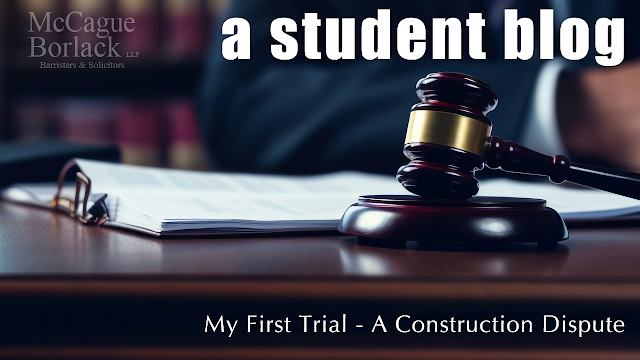While nerve-racking at first, every novice litigator looks forward to their first day speaking in Court.
After all, advocacy is our passion.
However, it is important to not confine the definition of advocacy to fit within any particular four walls. In my time as an articling student, I saw time and time again how effective a pen (or a keyboard!) can be. Whether it is a carefully drafted email to opposing counsel or a thousand-page “Brief," what a lawyer does outside the courtroom, at their desk, is most often what is needed to successfully advocate for their client’s interest. We always hear statements such as “99% of a lawyer's work happens outside the courtroom” but it takes the perspective that comes from immersing oneself in litigation to understand what it truly means.
Almost eight months into my articling term I had an experience that shined a great deal of light on this concept. I was invited to observe an appeal proceeding at the Court of Appeal for Ontario. Excited for the opportunity, I went to the courthouse to observe two of our lawyers make submissions. While I had been to court, both virtually and in person, many times by this point, it was my first time at the ONCA.
We entered the courtroom and the first thing I noticed were the pillars that were standing tall at every corner of the room. As everyone prepared to begin, I set down the rather large folder containing Briefs, Factums, Books of Authorities, etc. The court started with the Honourable Justices addressing the other side with a series of questions based on the written documents for over an hour. Then they turned to our side and simply stated that no oral arguments were necessary! While disappointed that I did not get to witness oral arguments being made by our lawyers, I realized I was carrying what resulted in this case's success in my hands all along. In other words, the winning arguments were made long ago by those drafting the factum and other documents.
While I always knew written advocacy was important, this experience highlighted just how significant of an impact it can have. Despite this, students get to be a part of this work from day one. So a message to those law students at the beginning of their journey: Your briefs may not be brief, but neither is their impact.
by Ali A




